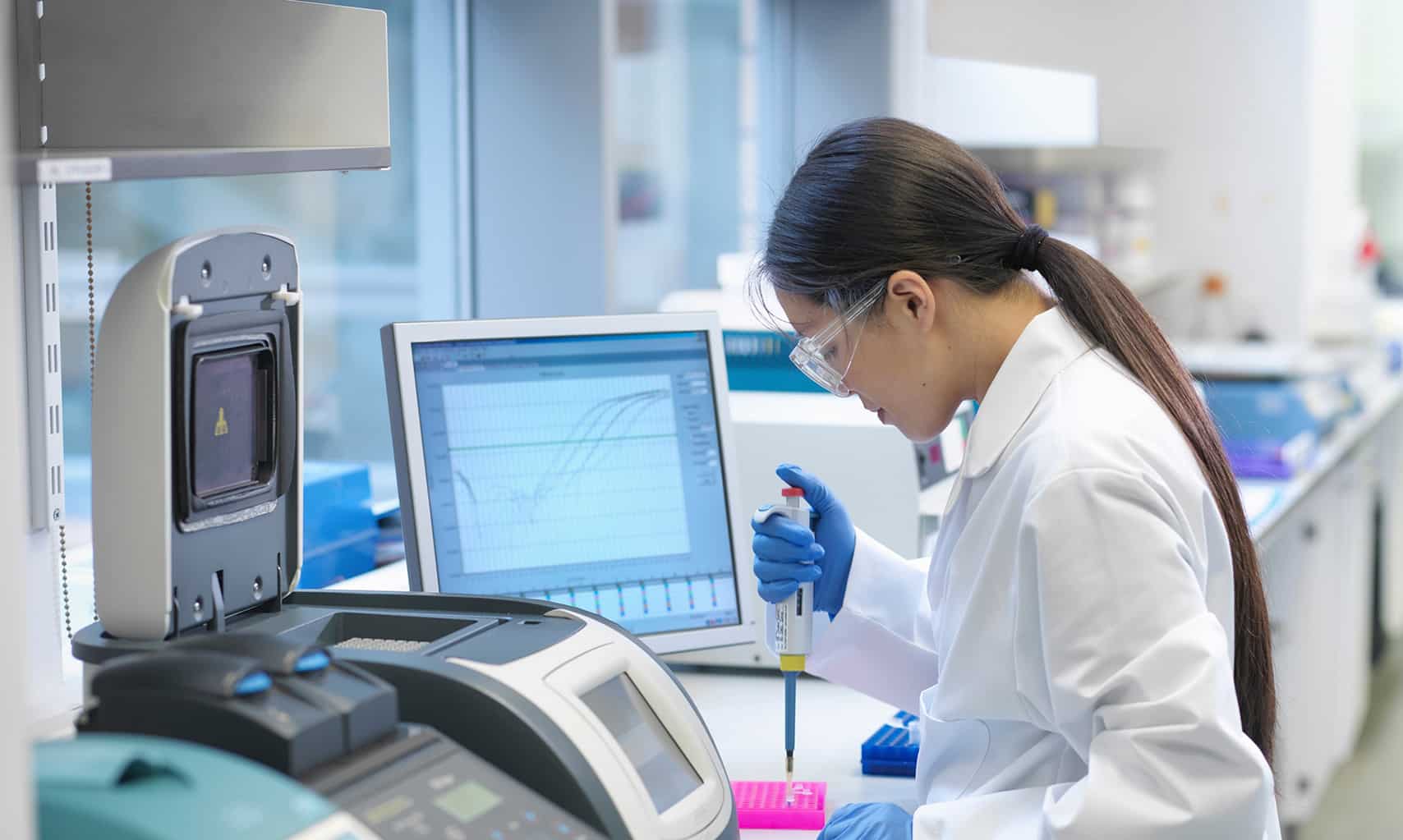Case Study
GWAS and Metabolomics Profiling to Predict Antihypertensive Drug Responses
GWAS and metabolomics combined reveal probable mechanisms underlying individual variation in hypertension drug treatment response.
This study leveraged the power of genomics and metabolomics to study a complex multigenetic disease and provide further insight into possible treatment options for hypertension.
This study leveraged the power of genomics and metabolomics to study a complex multigenetic disease and provide further insight into possible treatment options for hypertension.

The Challenge: Some Hypertension Drugs Work for Some Patients and Not for Others
Hypertension, or high blood pressure, is one of the world’s leading risk factors for various diseases and contributes greatly to mortality across the globe.1,2 While many drugs are available to treat hypertension and cardiovascular disease, individual patient response varies.3 Between 50 and 60% of hypertensive patients do not respond adequately to drug therapy.4 A few prior studies proposed that genetics was responsible for the variation in drug response, leading to multiple Genome Wide Association Studies (GWAS) on hypertension patients who use drug treatments.5–7 These studies aim to identify single nucleotide polymorphisms (SNPs) which are significantly linked to drug response.
The Solution: GWAS Studies Identify Genetic Variation Linked to Drug Response Variation
A previous GWAS study (named GENRES)6 used 4 different hypertension drugs as a monotherapy on 228 Finnish men with hypertension, rotating them so each patient was on each drug for 4 weeks in a random order. Changes in blood pressure were measured multiple times over the course of the experiment. GENRES identified 3 SNPs with a genome wide significance in response to bisoprolol, a beta-blocker hypertension drug. One of these SNPs, rs2514036, is located at the transcription start site of a gene encoding the protein ACY3, which is an enzyme that functions in amino acid metabolism pathways.
The authors set out to replicate these findings and performed a GWAS study (named LIFE) in 927 Finnish men and women treated for hypertension: 467 received atenolol, and 460 received losartan.8 After monotherapy and measuring changes in blood pressure, the GWAS revealed the same SNP, rs2514036, was significantly linked to response to atenolol (but not losartan). This was particularly of interest since atenolol is also a beta-blocker hypertension drug, targeting similar cardiovascular targets as bisoprolol.
Metabolon Insight: Untargeted Metabolomics Correlated Amino Acid Levels with Blood Pressure Response After Hypertension Drug Treatment
After associating the rs2514036 SNP in the ACY3 gene with the response to bisoprolol, the study turned to metabolomics to further investigate an underlying mechanism that could explain this significant linkage. The researchers collaborated with Metabolon, using the Metabolon Global Discovery Panel on 175 plasma samples from 35 patients in the GENRES study who had undergone monotherapy with bisoprolol. Ultrahigh performance liquid chromatography mass spectroscopy (UPLC-MS/MS) identified over 600 metabolites across all patients. The authors observed changes in the levels of the metabolites N-acetyl-phenylalanine, N-acetyl-tyrosine, and their deacetylated products, which are the substrates and products of ACY3 enzymatic activity.9 They identified a significant inverse correlation between the diastolic blood pressure level at baseline (placebo treatment) and plasma phenylalanine and tyrosine levels. Following bisoprolol treatment for 2 months, metabolomics revealed both systolic and diastolic blood pressure response were significantly correlated to the plasma baseline levels of phenylalanine and its ACY3-derived derivative, N-acetyl-phenylalanine.8
The Outcome: GWAS and Metabolomics Combined Reveal Probable Mechanisms Underlying Individual Variation in Hypertension Drug Treatment Response
The results of both the GWAS and metabolomics analysis in this study confirm an underlying genetic mutation that helps explain individual variation in response to different classes of hypertension drug treatments. The validation of the risk locus found at the transcription start site of the ACY3 gene pointed towards an important role in the response to bisoprolol. Metabolomics highlighted the significant changes in ACY3 substrate and product amino acids and derivatives, which provides not only a potential biomarker of drug response but helps explain a possible mechanism as well. Previous studies have associated phenylalanine with increased cardiovascular risk, and increasing evidence links the regulation of aromatic amino acids to the regulation of blood pressure.10 These results also highlight the potential use of phenylalanine, tyrosine, and N-acetyl-phenylalanine levels as biomarkers that can predict hypertensive patients’ response to beta-blocker drugs. Ultimately this study leveraged the power of genomics and metabolomics to better characterize a disease with complex underlying mechanisms and provide further insight into possible treatment options for one of the most severe risk factors facing the world today.
References
1. Lim SS, Vos T, Flaxman AD, et al. A comparative risk assessment of burden of disease and injury attributable to 67 risk factors and risk factor clusters in 21 regions, 1990-2010: a systematic analysis for the Global Burden of Disease Study 2010. Lancet. 2012;380(9859):2224-2260. doi:10.1016/S0140-6736(12)61766-8
2. Ettehad D, Emdin CA, Kiran A, et al. Blood pressure lowering for prevention of cardiovascular disease and death: a systematic review and meta-analysis. The Lancet. 2016;387(10022):957-967. doi:10.1016/S0140-6736(15)01225-8
3. Dickerson JE, Hingorani AD, Ashby MJ, Palmer CR, Brown MJ. Optimisation of antihypertensive treatment by crossover rotation of four major classes. Lancet. 1999;353(9169):2008-2013. doi:10.1016/s0140-6736(98)07614-4
4. Bromfield SG, Bowling CB, Tanner RM, et al. Trends in hypertension prevalence, awareness, treatment, and control among US adults 80 years and older, 1988-2010. J Clin Hypertens (Greenwich). 2014;16(4):270-276. doi:10.1111/jch.12281
5. Cooper-DeHoff RM, Johnson JA. Hypertension pharmacogenomics: in search of personalized treatment approaches. Nat Rev Nephrol. 2016;12(2):110-122. doi:10.1038/nrneph.2015.176
6. Hiltunen TP, Donner KM, Sarin AP, et al. Pharmacogenomics of hypertension: a genome‐wide, placebo‐controlled cross‐over study, using four classes of antihypertensive drugs. J Am Heart Assoc. 2015;4(1):e001521. doi:10.1161/JAHA.115.001778
7. Salvi E, Wang Z, Rizzi F, et al. Genome-Wide and Gene-Based Meta-Analyses Identify Novel Loci Influencing Blood Pressure Response to Hydrochlorothiazide. Hypertension. 2017;69(1):51-59. doi:10.1161/HYPERTENSIONAHA.116.08267
8. Rimpelä JM, Kontula KK, Fyhrquist F, et al. Replicated evidence for aminoacylase 3 and nephrin gene variations to predict antihypertensive drug responses. Pharmacogenomics. 2017;18(5):445-458. doi:10.2217/pgs-2016-0204
9. Pushkin A, Carpenito G, Abuladze N, et al. Structural characterization, tissue distribution, and functional expression of murine aminoacylase III. Am J Physiol Cell Physiol. 2004;286(4):C848-856. doi:10.1152/ajpcell.00192.2003
10. Würtz P, Havulinna AS, Soininen P, et al. Metabolite profiling and cardiovascular event risk: a prospective study of 3 population-based cohorts. Circulation. 2015;131(9):774-785. doi:10.1161/CIRCULATIONAHA.114.013116




